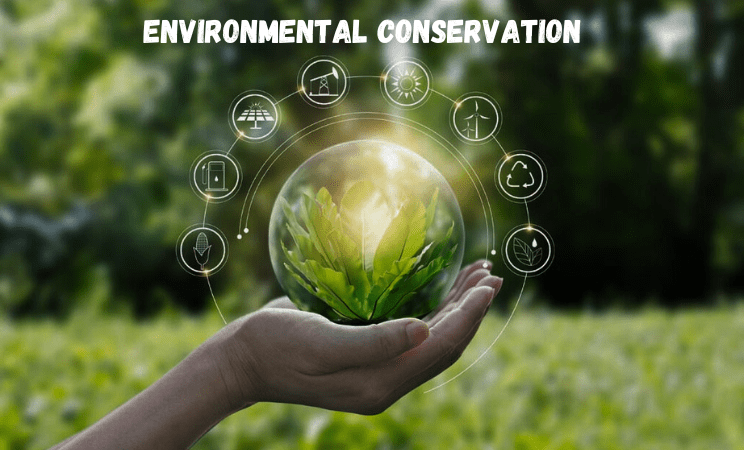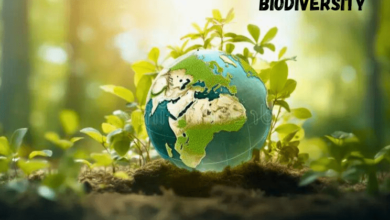Environmental Conservation: Strategies and Impact

Environmental conservation, a pivotal endeavor in the modern era, encompasses multifaceted strategies that safeguard our planet’s future. These strategies, ranging from legislation and sustainable practices to cutting-edge technologies, hold the power to mitigate climate change, preserve biodiversity, enhance human health, foster economic stability, and enrich cultural landscapes. Despite challenges such as economic concerns and cultural conflicts, the call to action for conservation has never been more urgent. It’s a shared responsibility to protect our environment, ensuring its sustainability for the well-being of present and future generations. Environmental conservation is our commitment to a greener, more harmonious world.
Understanding Environmental Conservation
Environmental conservation is a critical practice aimed at safeguarding our planet’s health and vitality. It encompasses diverse strategies and initiatives dedicated to preserving the natural world and its resources. Biodiversity, energy, water, sustainable agriculture, pollution control, and more fall under its purview. These efforts mitigate climate change, protect endangered species, and enhance human health. Environmental conservation is rooted in history, dating back to early movements and growing into a modern global effort. It faces challenges, from economic concerns to cultural conflicts, yet the urgency remains. It’s a collective responsibility to secure a sustainable future for all.
Importance of Environmental Conservation
Environmental conservation is of paramount importance in our rapidly changing world. It is the safeguarding of our planet’s delicate balance, preserving biodiversity, and securing the well-being of present and future generations. Conservation measures combat climate change, protect ecosystems, and maintain the availability of natural resources. Furthermore, they promote cleaner air and water, ensuring healthier lives for all. Beyond environmental benefits, conservation fosters economic growth by creating sustainable practices and innovative technologies. It also nurtures cultural heritage and indigenous wisdom, forging a sense of shared responsibility. In essence, environmental conservation is an urgent call to action, a duty to cherish and protect our home, Earth.
Early Conservation Movements
Early conservation movements mark the genesis of modern environmental awareness. In the 19th and 20th centuries, visionaries like John Muir laid the foundation for the preservation of natural spaces. Indigenous communities, with their sustainable land and resource management, displayed a profound understanding of the delicate balance between humans and nature. These movements championed the idea that nature should be conserved for its intrinsic value. Landmark events like the establishment of national parks exemplified the burgeoning commitment to safeguarding the environment. Today, these early movements serve as a reminder of the historical journey toward recognizing the importance of environmental conservation.
Modern Environmentalism
Modern environmentalism encompasses a dynamic and urgent movement focused on safeguarding the planet. It has evolved from early conservation efforts into a multifaceted, global force advocating for sustainability, climate action, and the preservation of biodiversity. This contemporary environmentalism promotes renewable energy, green technologies, and responsible resource management, aiming to combat climate change. It champions international agreements, technological innovations, and public awareness, fostering a shared responsibility for the environment. As the world grapples with environmental challenges, modern environmentalism stands as a vital beacon of hope, calling for immediate action to protect the Earth for current and future generations.
Landmark Environmental Events
Landmark environmental events have shaped our approach to conservation. Events such as the publication of Rachel Carson’s “Silent Spring” in 1962 ignited global environmental awareness, leading to the establishment of the U.S. Environmental Protection Agency. The 1972 United Nations Conference on the Human Environment in Stockholm laid the foundation for international cooperation on environmental issues. These events underline the significance of literature and global collaboration in addressing ecological challenges. They have been instrumental in developing the policies and global agreements crucial to preserving the environment for future generations. Landmark events remind us of the vital role collective action plays in environmental stewardship.
Water Conservation
Water conservation is a critical global initiative aimed at responsibly managing and preserving one of our planet’s most vital resources. It involves adopting practices and technologies that reduce water wastage and ensure its sustainable use. This effort not only helps mitigate water scarcity issues but also contributes to energy savings and the preservation of aquatic ecosystems. Implementing strategies like efficient irrigation, recycling, and reducing water pollution is essential to secure a clean and ample water supply for current and future generations. The urgency of water conservation cannot be overstated as it plays a pivotal role in sustaining life on Earth.
Sustainable Agriculture
Sustainable agriculture is a holistic approach to farming that prioritizes environmental health, economic profitability, and social equity. It seeks to balance the need for increased food production with the necessity of conserving natural resources and minimizing negative environmental impacts. Sustainable agriculture embraces practices such as crop rotation, organic farming, agroforestry, and integrated pest management. By reducing the use of chemical fertilizers and pesticides, promoting biodiversity, and enhancing soil health, it aims to create a resilient and regenerative food system. This approach not only safeguards the environment but also ensures long-term food security and the well-being of farming communities.
Legislation and Policy
Legislation and policy are fundamental pillars of environmental conservation. They provide the legal framework and guidelines necessary to protect the environment. International agreements, like the Paris Agreement and the Convention on Biological Diversity, foster global cooperation in addressing environmental issues. At the national level, environmental laws and regulations govern aspects such as pollution control, land use, and resource protection. These legal mechanisms not only set standards for industries but also hold governments accountable for their environmental responsibilities. By providing a structure for enforcement and compliance, legislation and policy play a pivotal role in shaping the strategies and impact of environmental conservation efforts.
Conclusion
environmental conservation is not merely a choice; it is an imperative. Our world is at a crossroads, facing unprecedented environmental challenges. This article has highlighted the diverse strategies employed in the noble pursuit of conserving our planet. From legislation and sustainable practices to technological innovations and public awareness, each avenue plays a vital role. The impact of these efforts ripples through climate change mitigation, biodiversity preservation, human health, economic opportunities, and cultural revitalization. The challenges are real, from economic concerns to cultural conflicts, yet the urgency is undeniable. It’s a call to action, a shared responsibility to secure a sustainable future for our planet and generations to come.
FAQs
What is environmental conservation?
Natural resources and the environment are protected and preserved by environmental conservation.
Why is biodiversity preservation essential?
Biodiversity ensures ecological balance and the survival of various species and ecosystems.
How does sustainable agriculture benefit the environment?
Sustainable farming reduces environmental impact, conserves resources, and promotes healthier ecosystems.
What are the challenges in enforcing environmental laws?
Enforcement can be complex, often due to resource constraints and varying levels of commitment.
How does artificial intelligence aid conservation efforts?
AI analyzes data to track poaching, predict environmental changes, and enhance ecosystem management.



